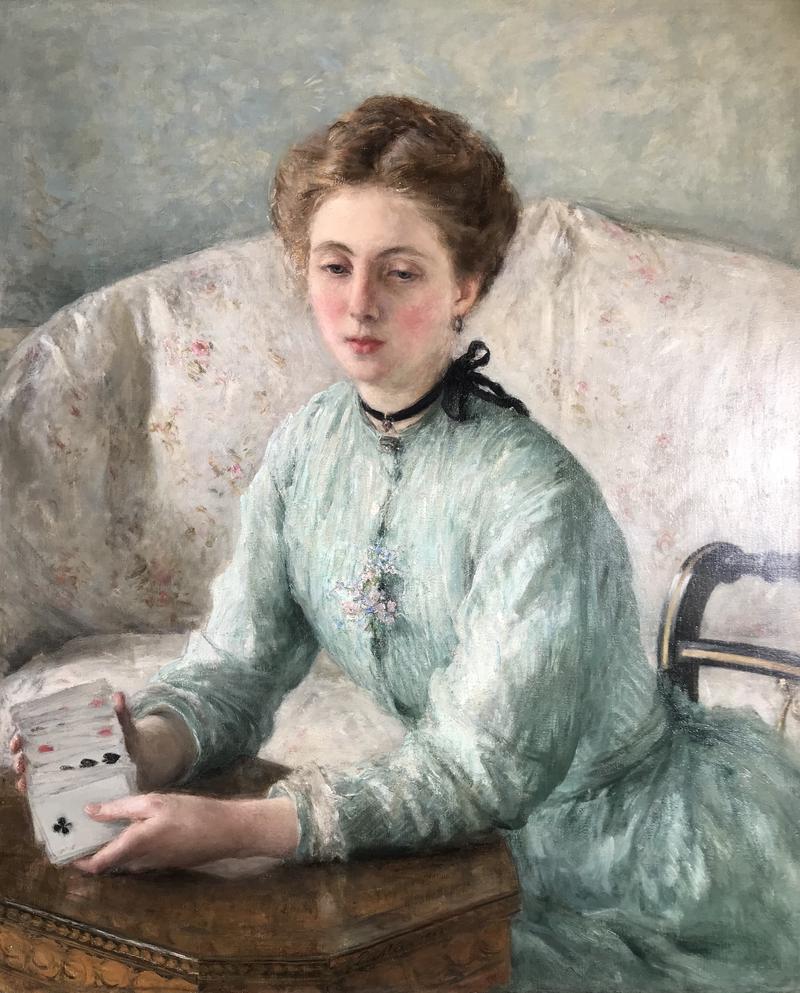A TURN OF THE CARDS

Exhibition
New English Art Club, 1903Bradford, Cartwright Hall, 1904
Brooklyn Institute of Arts and Sciences, Loan Exhibition, 1922
In the late 1880s and by the beginning of the 1890s, Steer was the leading exponent and most progressive of English artists who were taking their inspiration from their French impressionist counterparts. His series of sun-drenched scenes with their close analyses of tone and shadow, evaporating forms and sparkling, broken touches of colour came closer to French Impressionism than anything. He was the most radical artist in Britain, unorthodox and exceptional, employing a distinctive autographic quality of painting and working in a number of different styles simultaneously whilst always maintaining an interest in the relationship between sensation and expression and often creating a visionary intensity. Steer was a founder member of the New English Art Club which challenged the traditions espoused by the Academy, in favour of a modern approach to art which incorporated impressionism, naturalism and symbolism. It offered the contemporary artist an alternative venue for display and thus, supported vigorous and independent talent, becoming the platform for Steer and other artists’ work.
This painting is part of a group of paintings that Steer painted in the early 1900s when he had worked through his initially radical impressionist style. The impact of Whistler is still apparent but he begins to embrace eighteenth century ideas in art with nods to Gainsborough, Fragonard and Watteau and in his landscapes Turner and Constable. Here he depicts a woman at ease in her surroundings, with an introverted gaze, caught up in her own world. The model for this painting was either Theodora or Helen Bennett and she appears in several other of Steer’s paintings of the time.
Steer was a natural sketcher and worked best when he was spontaneously recording what was before his eyes. Content with his vocation and intent upon its pursuit, he never married and by this time, was living alone, save for his erstwhile housekeeper, in Cheyne Walk surrounded by his beloved ‘Edwardian Hepplewhite, chintz, French colour prints and Chinese bronzes’ which he often incorporated into his figure studies. He painted in his sunlit drawing-room, preferring the comfort and light of this room to his studio above. Steer stayed out of the limelight, was aloof from academic circles and remained independent and in some ways a recluse. Official recognition did come to him, unsolicited but welcome and he was awarded the Order of Merit in 1931. He taught at the Slade School of Fine Art from 1893 to 1930; influencing younger artists such as Augustus John, Gwen John, William Orpen, Stanley Spencer, Paul Nash and Anna Airy. Steer was benign, modest and amusing and held in great regard by those who knew him; he painted until the tragedy of failing sight obliged him to relinquish the practice.



